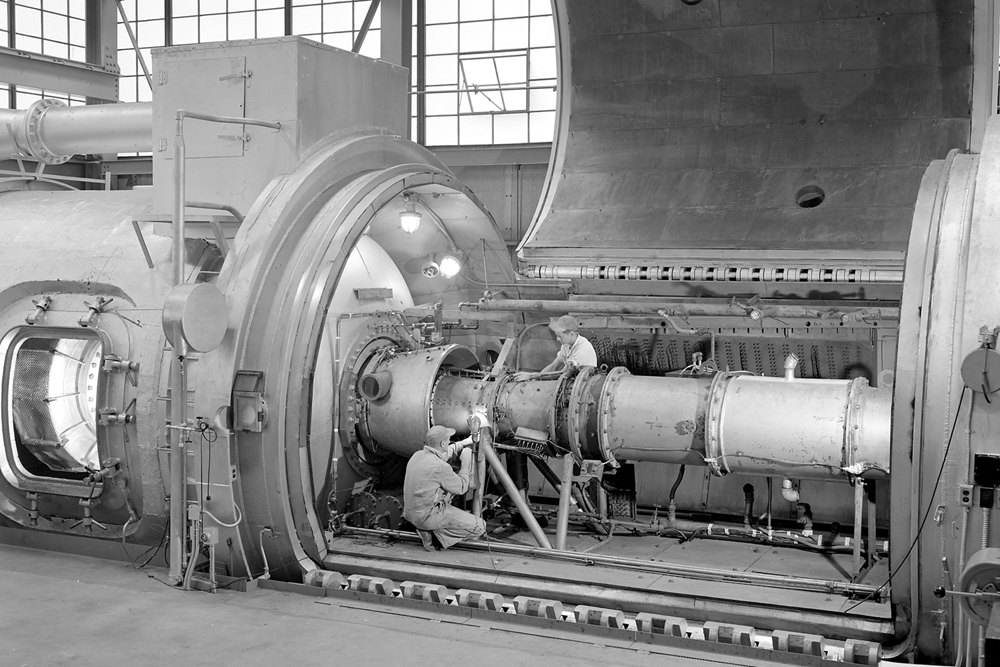Space History Photo: 28 Bomarc Ram Jet Engine Testing

In this historical photo from the U.S. space agency, a Bomarc installation in Propulsion Systems Laboratory (PSL) is shown on Oct. 5, 1954. Bomarc was a long-range interceptor missile for the Air Force that underwent a long period of development in the 1950s. The Boeing and University of Michigan-designed missile was launched vertically using a rocket engine, but its flight was powered by two 28-inch-diameter Marquardt ramjets.
The ramjets for Bomarc were studied in PSL in 1954 and 1955. The studies covered a variety of performance issues including the systems dynamics response and the pneumatic shock-positioning control unit. The lengthy development was hampered by budget constraints and political in-fighting. Ten Bomarc sites were established when deployment was finally completed in 1962. The view in this photo is of an engine air calibrator installed in altitude tank. Note view through inlet section door showing screened bellmouth with the supersonic nozzle at zero degrees angle of attack. The Bomarc was a nuclear-tipped surface to air missile for shooting down aircraft.
Each weekday, SPACE.com looks back at the history of spaceflight through photos (archive).
Get the Space.com Newsletter
Breaking space news, the latest updates on rocket launches, skywatching events and more!
Join our Space Forums to keep talking space on the latest missions, night sky and more! And if you have a news tip, correction or comment, let us know at: community@space.com.

The National Aeronautics and Space Administration (NASA) is the U.S. government agency in charge of the civilian space program as well as aeronautics and aerospace research. Founded in 1958, NASA is a civilian space agency aimed at exploring the universe with space telescopes, satellites, robotic spacecraft, astronauts and more. The space agency has 10 major centers based across the U.S. and launches robotic and crewed missions from the Kennedy Space Center in Cape Canaveral Florida. It's astronaut corps is based at the Johnson Space Center in Houston. To follow NASA's latest mission, follow the space agency on Twitter or any other social channel, of visit: nasa.gov.









